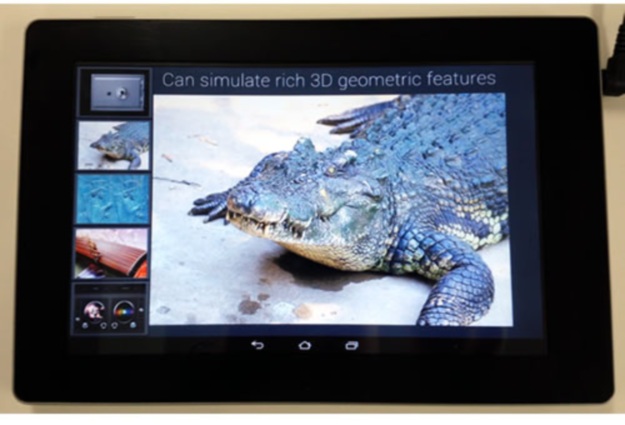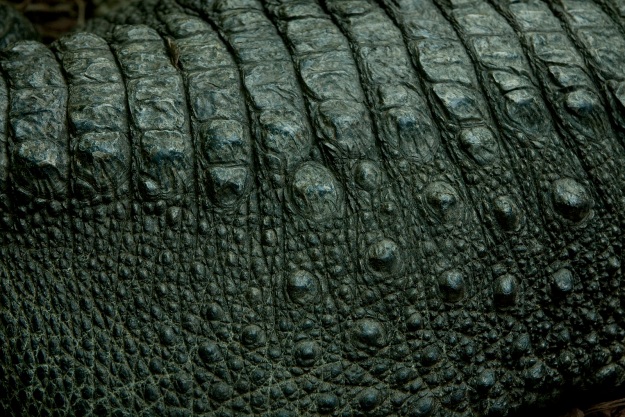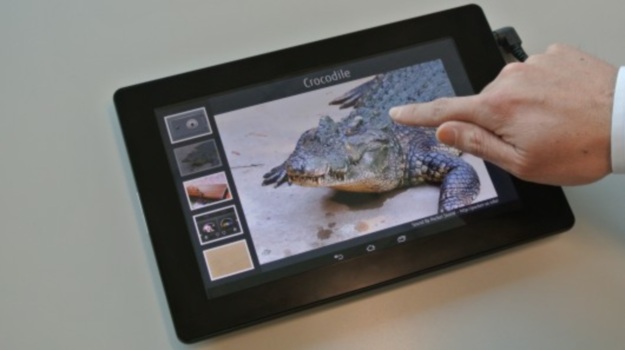Imagine for a moment that you are viewing a crocodile sitting at the edge of a pond.

Okay, maybe it’s not that hard to imagine with a picture like that. Let’s try this — imagine you are holding the tablet above that shows a crocodile sitting at the edge of a pond. You run your finger across the image and where there’s water, the tablet feels slippery, but when your finger hits the crocodile skin, you feel the soft tug of the reptile’s leathery skin.

The concept of a haptic sensory tablet is nothing new — this technology already exists, and most of those haptic sensors convey texture to the user via vibration or static electricity.
What makes this particular story cover-worthy is the fact that Fujitsu is trying a whole new approach with their new tablet — it uses ultrasonic vibrations to deliver tactile sensations.

Specifically, the technology is able to deliver the sensation of altered levels of friction by creating a high-pressure layer of air between the tablet’s surface and the user’s fingertip; doing this reduces friction and creates a sort of floating effect. When cycling through high- and low-friction input / output at a rapid pace, the tablet generates the illusion of tactile sensation, thereby giving the user the feeling of an image being either bumpy, rough, or smooth.

This tactile information, along with the tablet’s visual display and any associated audio information, enhances the user’s experience, and gives him / her the feeling of actually touching the image on the screen.

A prototype device was put on display at the recent Mobile World Congress even in Barcelona. There, guests experienced several different sensations and audio features with the tablet, including:
– Japanese harp: Offers users the sensation of plucking the strings of a koto, a traditional Japanese harp.
– DJ: Mimics the sensation of moving a CD placed on a mixing deck, and using volume and other controls that feel as if they are sticking out.
– Vault: Gives auditory and tactile feedback as users rotate a combination lock to open a vault.
Fujitsu will continue doing some more R&D work with the the technology in order to expand the range of tactile expressiveness that it has to offer.
The company intends to fully commercialize the tablet by 2015.
Story via fujitsu.com
Advertisement





